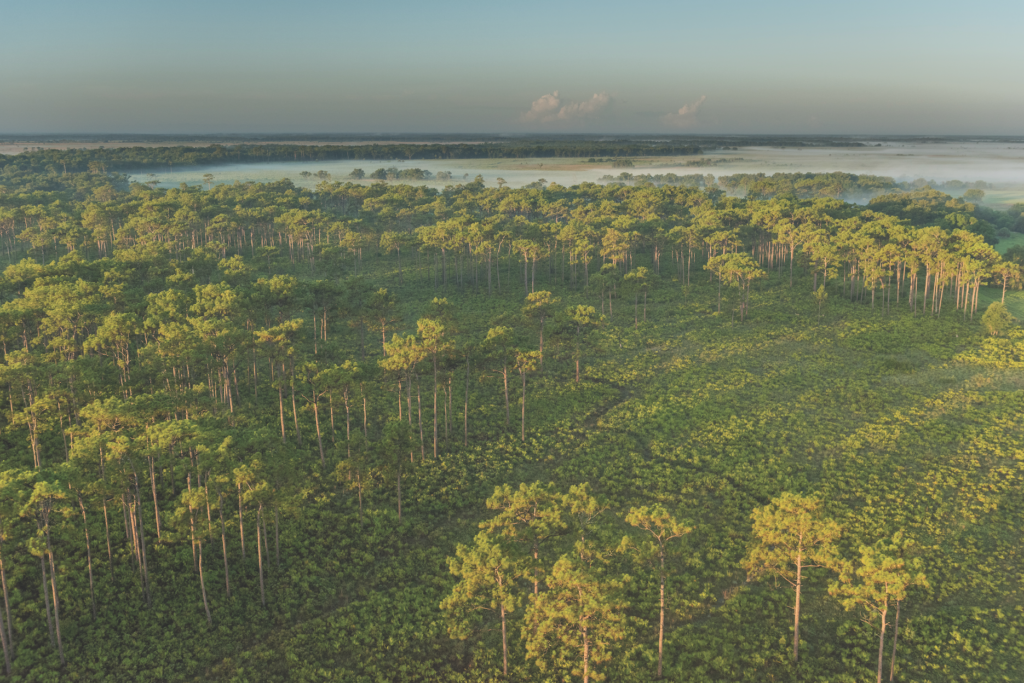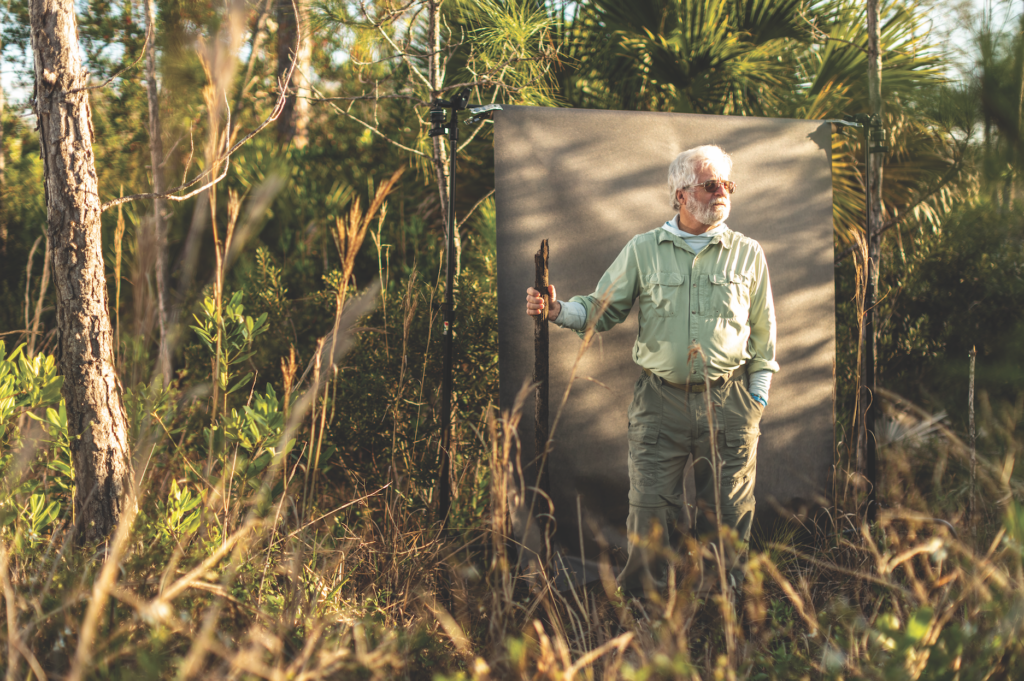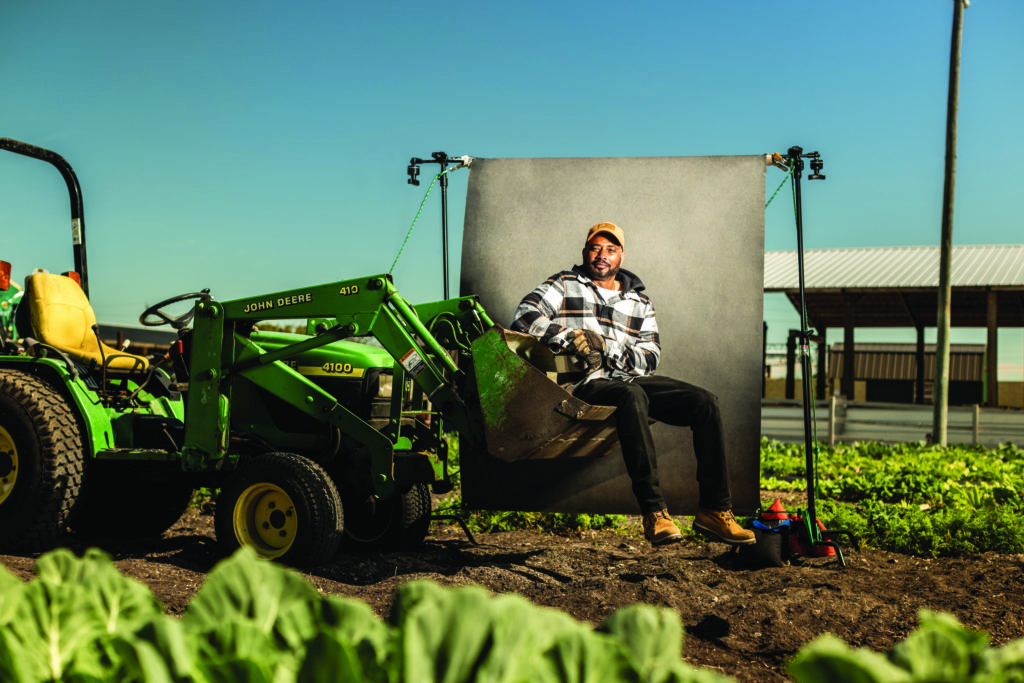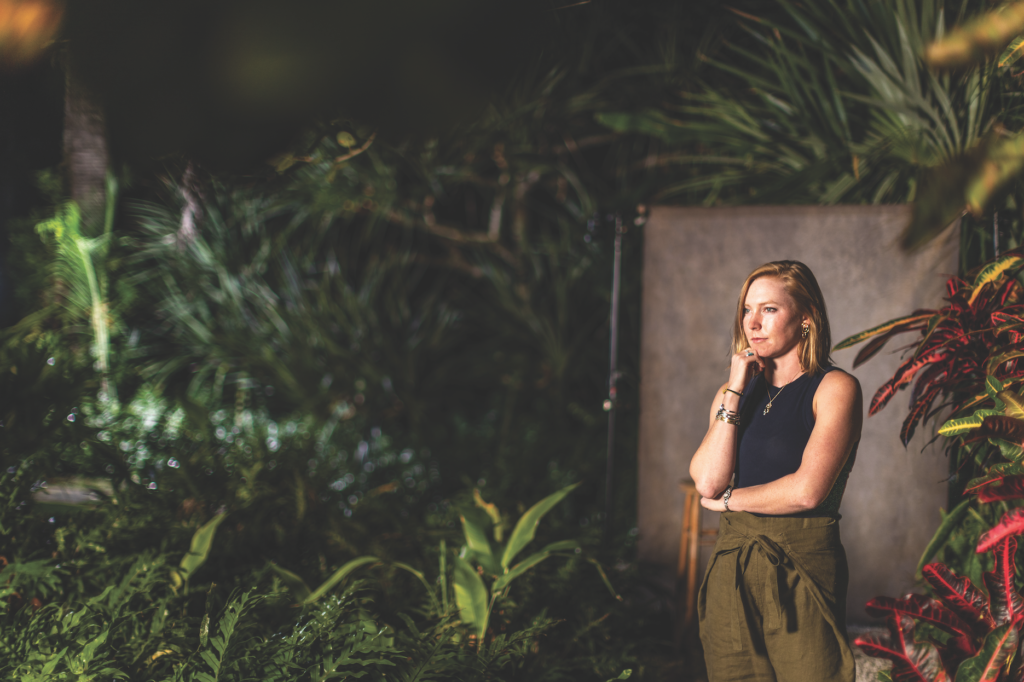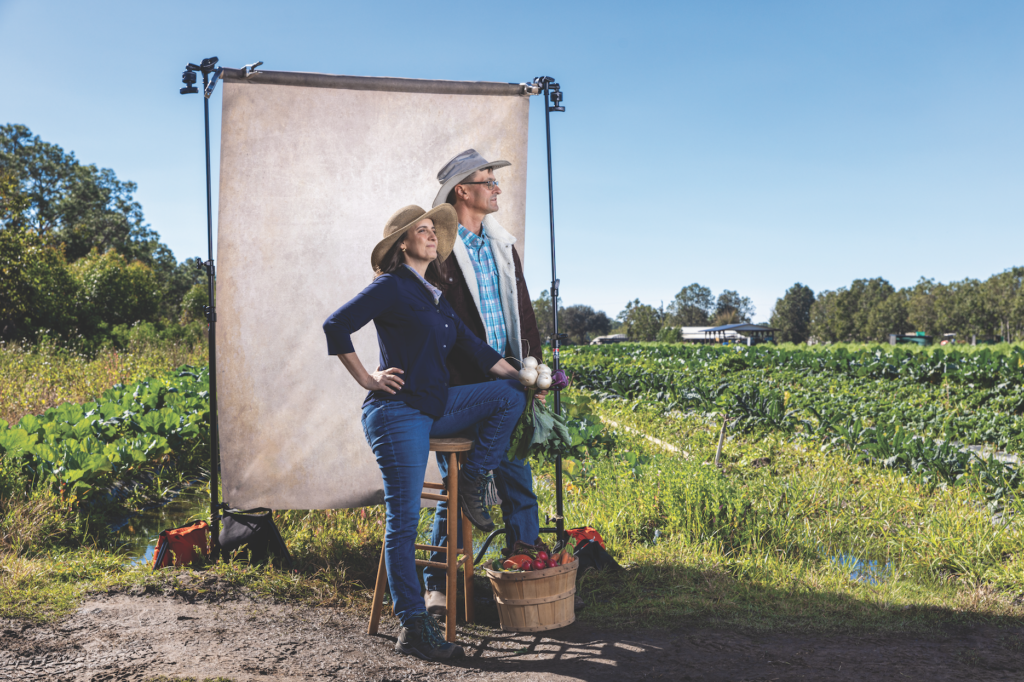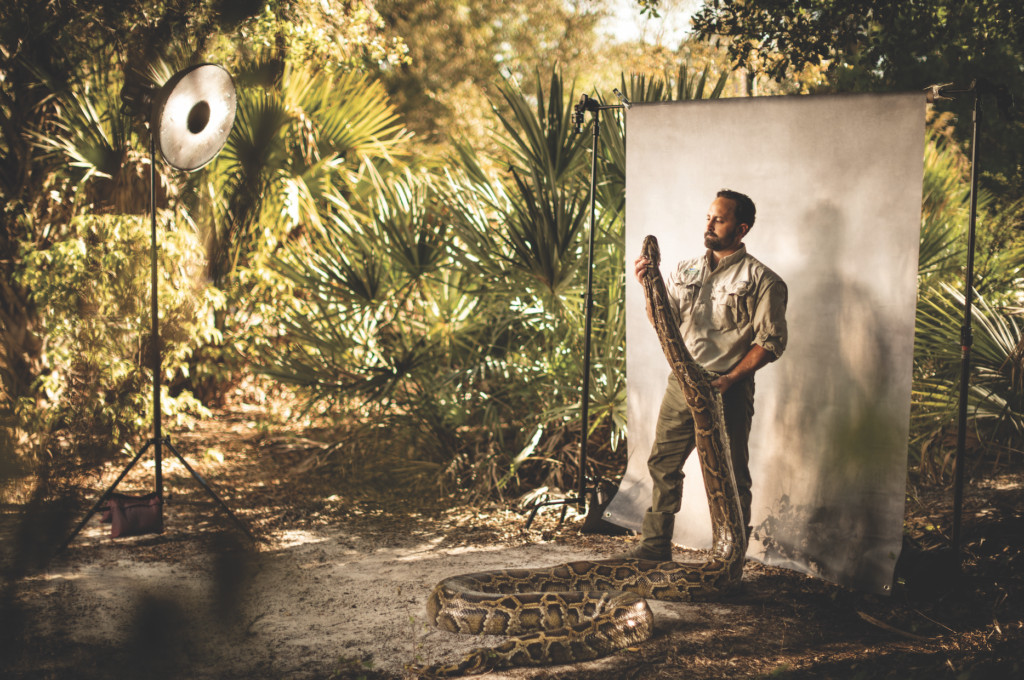Dr. Edwin Everham
Ecology & Environmental Studies Professor at Florida Gulf Coast University
When Hurricane Irma hit in 2017, Florida Gulf Coast University professor Dr. Edwin Everham found a practical purpose for his work with forest resiliency and natural disasters. A founding faculty member who has been with the Fort Myers university’s environmental department since 1996, Everham’s research involves monitoring mangrove forests and examining how they recover from hurricane damage. With his wife, cat and two dogs, he camped out in a classroom at the university to watch the record-setting storm hit a forest in real-time as it ripped through the region—and some 469,000 acres of mangroves that line the state, defending the coast.
Mangroves provide sanctuary for about 1,300 animal species in Southwest Florida, defend against natural disasters and filter out water pollutants. Everham’s experience, including studying tropical forests’ resiliency to hurricanes in Puerto Rico from 1989 to 1995, has helped his local research for the past 25 years. But hurricanes are the least of the mangroves’ threats now, Everham explains. “With the increasing stressors of direct human impacts … the hypothesis is that they will be overwhelmed at some point,” the 63-year-old disturbance ecologist says, citing changes to the natural water flow due to development and homeowners’ clearing and trimming of trees, along with the consequences of climate change, like rising sea levels and bigger, more frequent hurricanes. The destruction of mangroves, in turn, thwarts their ability to act as a barrier against storms. “If you protect mangroves, they will return the favor,” he says.
Everham solidified his legacy last year by co-authoring a book about FGCU setting a precedent for sustainable universities, and he’s currently writing another book on Collier County’s Lake Trafford, which he’s spent nearly two decades helping restore. His legacy continues with the FGCU Water School, which debuted its new, $57.9 million building this spring. Everham was instrumental in advocating for cross-departmental programming, long before the school was a concept.
Looking ahead, Everham aims to transform his regional mangrove research into a database that scientists can refer to 100 years from now to trace forest patterns. But, he sees his time spent with students as the ultimate investment in the future. A gift from a student rests in his office: a clock made from a tree felled by Irma, a reminder of his work in the field and with students. “I’m not building a car with parts that are my students, shoving them through the assembly line,” he says. “Every moment matters.” —Zahra Khan
Dr. Jesse Bryson
Founder and CEO of the “I Will” Mentorship Foundation
One look at Jesse Bryson tending to the Urban Community Farm off Dr. Martin Luther King Jr. Boulevard in Fort Myers, and it’s clear he’s exactly where he needs to be.
Bryson grew up not far from the farm, off Second Street and Michigan Avenue. “I went to school with the same people I’m trying to serve today,” he says. After a 20-year tenure in the Army, he returned to Fort Myers to teach. The 50-year-old, who focused on information systems technology in the Army, brought environment, science, technology, engineering and math (E-STEM) to incorporate arts education—lessons to his JROTC classes at Fort Myers High School. He launched two robotics teams, where his students learned about gear ratios, pneumatics and engineering—but also something bigger. “I want you to understand that you’re going to struggle,” Bryson told them. “The quicker you understand it’s not going to be easy, the quicker you will adapt. And the quicker you learn to adapt, the quicker you’ll become a champion in this life.”
It’s a lesson he believes will stay with them. “A lot of these kids will be the first generation to go to college,” he says. “I wanted to instill confidence in them so they could say, ‘I’ve done something difficult before. I can do it again.’” In 2017, Bryson won the Golden Apple Award, Lee County’s highest teaching honor, and in 2018, he was named national JROTC Instructor of the Year.
Among his most impactful efforts is the “I Will” Mentorship Foundation, which he founded in 2015 to bring E-STEM learning and mentorship to students from underfunded and deprioritized schools. Through “I Will,” Bryson launched the Urban Community Farm, which has an area where students and volunteers grow vegetables for local charities, and another where community members from a 35-mile radius can grow their own food in container gardens.
The 2-acre plot sits in the heart of the Dunbar neighborhood. The farm’s success, Bryson believes, is due to the diversity it attracts—high school students, elders, children from the Boys and Girls Club and agriculture specialists from the University of Florida’s extension service. “It’s the true meaning of community,” he says.
As the urban farm continues to grow and thrive, Bryson says he sees moments of illumination every day, with young people experiencing new things, like eating something they’ve helped grow for the first time. They look around, hesitate, and ask, “Am I really supposed to be doing this?” Bryson tells them, “Go ahead.”
—Artis Henderson
Oona Watkins
CEO of Oona Seas, LLC
Oona Watkins grew up fishing the local backwaters, searching for snook, snapper and redfish. After graduating from Williams College in Massachusetts with a degree in geology, she went to D.C. to work with Oceana, the nonprofit aimed at conserving the world’s oceans. Her lifelong love of art came in handy there as she conceptualized graphics for major campaigns.
Now, the 28-year-old graphic designer is back in Naples, using her talents to protect those same waterways she fished as a kid and the oceans they empty into. Her design firm, Oona Seas, focuses on helping eco-friendly nonprofits—like Proud Pour and Captains for Clean Water—get their messages across. She creates posters, flyers, social media graphics and other marketing materials that depict sea creatures like sharks, dolphins and seahorses in her signature illustration style: hatch mark strokes layered atop each other to create depth and shading. These are rendered in bright, vivid colors, like kelly green and hot pink, that command attention. “The fish aren’t in the same areas they used to be. After the red tide comes through, seeing how things are destroyed has definitely influenced why I care about doing work that illustrates these issues and makes people change their minds,” she says.
Watkins comes from Naples’ royalty. Her father, Michael Watkins, owned the Naples Beach Hotel and Golf Club for decades, and her mother, Ellin Goetz, has been behind major ecological projects. Growing up, Watkins and her two siblings spent more time outside of the house than inside, she says. She dabbled in art as a child and took classes in college to keep her skills fresh. As a senior campaign associate for offshore drilling at Oceana, those talents translated easily. Her maps—the first to show the cumulative harm to marine mammals from repeated blasts—were used in litigation against the federal government resulting in the seismic industry abandoning efforts for airgun blasting in 2020.
Since returning home, she’s aligned her artistry with local environmental efforts. Her work with Conservation Collier was successful in helping convince 77% of county voters to support a tax increase that would maintain preserves and greenspace.
Watkins also recently joined the Young Everglades Patrons, part of The Everglades Foundation. She volunteers to lead wet walks and tours for young professionals, preparing them to become future stewards of Florida’s wilderness. “The more people on board, the better Florida’s future looks,” she says. —Kristine Gill
Eva and Chris Worden
Owners of Worden Farm
The first stop on Eva Worden’s tour of the 85-acre organic farm she and her husband, Chris, founded in Punta Gorda nearly 20 years ago has nothing to do with crops. She navigates her utility vehicle to Worden Farm’s southern boundary and points to the neighboring Fred C. Babcock/Cecil M. Webb Wildlife Management Area. The 80,000-acre preserve is one of the last undeveloped pine habitats in the region. To the farm’s north is Shell Creek, the primary water source for Punta Gorda. To the west, some miles away, is the Gulf of Mexico. That’s why the Wordens think about farming as a means of caring for the land.
Chris holds a doctorate in crop science and plant nutrition from the University of Connecticut; Eva earned her Ph.D. in ecosystem management from Yale University. Both have master’s degrees in horticulture sciences from the University of Maryland, where they met. In addition to farming, they consult with other growers, offering strategies on everything from organic practices to community engagement.
Agriculture often gets a bad rap in the region’s water woes. In addition to its demands on the aquifers, substances in farm runoff—namely nitrogen and phosphorus from fertilizer, manure and decaying organic material—fuel the growth of harmful algal blooms. The Wordens are doing all they can to keep that from happening—along with implementing other practices that benefit the land, wildlife and people. “We try to take care of the Earth, our neighbors and the larger community,” Eva says.
On the farm, bamboo and corymbia trees break the wind, reduce erosion, absorb water, provide wildlife habitat, and support pollinators and other beneficial insects. Retention ponds capture rain and surface water for reuse. A microirrigation system minimizes freshwater demands, while a special mulching technique conserves water and suppresses weed growth.
Planting strategies make a difference, too. Unlike monoculture farming, where one type of crop is planted for efficiency, Worden Farm contains a plethora of produce. They grow more than 50 varieties of greens, herbs, root vegetables and fruiting plants like tomatoes, cucumbers and squash, as well as off-season cover crops to enrich and stabilize the soil and keep plant-harming pests from taking root.
The farm sells directly to consumers at farmers markets, at their Sunday farmstand and through seasonal farm box subscriptions. Chris estimates they feed 1,500 families a week. “A lot of people have come to us and said that the vegetables have changed their lives,” he says, noting several regulars whose medical issues prompted dietary changes. “Without members or the others who buy our produce, we wouldn’t be here.” —Jennifer Reed
Ian Bartoszek
Wildlife Biologist and Science Project Manager at the Conservancy of Southwest Florida
Deep in the Florida scrub, Ian Bartoszek holds a 14-foot female python. She’s easily over 100 pounds. But Bartoszek isn’t fazed. “We’ve seen pythons double that weight,” he says.
It’s just another day at the office for the 45-year-old wildlife biologist. Bartoszek heads what he calls a special forces team at the Conservancy of Southwest Florida. Together with another biologist and an intern, the team removes invasive Burmese pythons from the surrounding wilderness. “We take the fight to them,” Bartoszek says.
For the past three decades, Burmese pythons have been consuming Florida wildlife at a ruinous rate. Originally brought to the United States as part of the pet trade, they’ve escaped into the wild by several avenues, either by pet owners releasing them, escaping their enclosures themselves or by slithering away after Hurricane Andrew wrecked Dade County in 1992. Now they’re pushing against the edges of civilization. “They’re closer than you think,” Bartoszek says.
At full size, the snakes have few natural predators. And they breed prolifically, with a full-size female, on average, laying 43 eggs a year. Their appetites are also devastating to the ecosystem. “But they’re not interested in us,” Bartoszek says. “They’re interested in our native wildlife.” Rabbits, foxes, possums, raccoons, deer, birds and even alligators have been found in their bellies. According to a 2012 study published by the Proceedings of the National Academy of Sciences, the remote southernmost regions of Everglades National Park—where pythons have been established for decades—saw a devastating drop in the native wildlife population. “Now we have this apex predator,” he says. “We’re just trying to hold the line.”
Bartoszek and his team have been tracking and humanely euthanizing Burmese pythons in the region since 2013. In less than 10 years, they’ve pulled more than 25,000 pounds of pythons from the scrub. Most of the snakes are breeding females captured with an innovation Bartoszek and the Conservancy developed with research partners to use male Burmese pythons as scout snakes, outfitted with radio transmitters, to lure the females.
Each python captured gets us a step closer to protecting the local ecosystem, but Bartoszek acknowledges there’s no magic bullet. “Some days are rewarding, and some days are hard slogs through the wilderness,” he says. “But I wouldn’t be here if I didn’t love this place and feel the calling to defend its wildlife.” —A.H.
Cori Craciun
President and Founder of Naples Pride
Cori Craciun was 18 when she was blacklisted from her native Romania in 1990 for protesting its then-neocommunist government. The political landscape of Eastern Europe was shaky amid the Soviet Union’s collapse, and she found herself forced to make her way through it, leaving behind her family and her home—but not her voice. After hiding for a week, she ran across the border with four friends into Hungary, where she claimed political asylum and lived for nine years.
Craciun wasn’t aware an LGBTQ community existed until she moved to the United States in 1999 and soon realized she was a part of it. “I knew I was different, but I didn’t know why,” she says. “I didn’t have a name for it, and I didn’t know what to make of my feelings, nor had I anyone to talk to about it, so I didn’t identify as a lesbian until living in the States.” Inspired by the lack of resources for survivors of domestic violence and the LBGTQ population as she was growing up, she began distributing pamphlets in local bars and at Fort Myers pride festivals. By 2011 she was volunteering at The Shelter for Abused Women & Children in Naples. “I wish when I grew up, I had somebody to tell me that it’s OK [to be gay],” she says. “It was a subject that wasn’t discussed.”
After the 2016 presidential election, she helped organize the Naples Women’s March for Social Justice in January 2017. She expected 300 people; about 2,500 showed up. Propelled by the turnout, she led an effort through Naples Pride to organize the city’s first pride festival, which drew another 3,000 people. The most recent one, in 2019, saw nearly 10,000, she says: “Seeing the support of the people, the community, the businesses and the sponsors, we already knew the center was needed, but it was driven by how many people came out.”
In 2020, she opened the Naples Pride Center, a 4,500-square-foot space with services for people from all over the region, including a free walk-in clinic that provides STD, STI, and HIV testing, plus treatment through the pharmacy. In June, which is LGBTQ Pride Month, Craciun hopes to add transgender hormone therapy. “I think there is a saying in English,” she says. “‘If you build it, they will come’—and it’s so true.” —Z.K.

